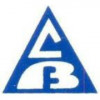Filter interviews by
Linde India Electrical Trainee Interview Questions and Answers
Linde India Electrical Trainee Interview Experiences
1 interview found
I appeared for an interview in Dec 2023.
(1 Question)
- Q1. What is your name
(2 Questions)
- Q1. What is your field
- Ans.
My field is electrical engineering.
I have a degree in electrical engineering.
I have experience working with electrical systems and circuits.
I am knowledgeable in areas such as power distribution, control systems, and electronics.
I have worked on projects involving electrical design and troubleshooting.
I am familiar with electrical codes and safety regulations.
- Q2. My field is electrical
Interview questions from similar companies

Interview Preparation Tips
Experience: I qualify this round.
Duration: 30 minutes
Total Questions: 20
Round: Resume Shortlist
Experience: I was shortlisted.
Round: Technical + HR Interview
Experience: I was disqualified.
Skills: Technical Skill And Speaking Skill

I applied via Recruitment Consultant and was interviewed before Mar 2018. There was 1 interview round.
Interview Preparation Tips
Skills: Ability To Solve All The Questions, Problem Solving, Time Management
Duration: 1-4 weeks

I applied via Recruitment Consultant and was interviewed before May 2020. There were 3 interview rounds.
Interview Questionnaire
5 Questions
- Q1. Tell about myself
- Q2. Expert in which field
- Ans.
Expert in software development and architecture
Proficient in multiple programming languages such as Java, Python, and C++
Skilled in designing and implementing complex software systems
Experienced in using various development tools and technologies
Knowledgeable in software architecture patterns and best practices
- Q3. Auto cad , vendor development
- Q4. Hobbies
- Q5. Watching TV
Interview Preparation Tips

I appeared for an interview in Oct 2019.
Interview Questionnaire
1 Question
- Q1. Electrical Technician
Interview Preparation Tips

Interview Questionnaire
1 Question
- Q1. 10th pass and iti pass electrician 2015 to 2017 and 2018 1 year experience and 2018 to 2019 apprenticeship and 1 month madina gulf country shutdown
Interview Preparation Tips

I appeared for an interview in Sep 2024.
(5 Questions)
- Q1. Lighting Maintenance, Battery Maintenance
- Q2. Motor Maintenance
- Q3. Transformer Inspection
- Q4. Bettery Inspection
- Q5. Motor Inspection


(2 Questions)
- Q1. Assigned for the Construction, Commissioning and Operation works related to tunnel system
- Q2. Work includes Loop checking, testing, commissioning, functional test and trouble shooting of LV Switch gear. MCC, Motors, VFD
Interview Preparation Tips

Electrical Technician Interview Questions & Answers
Sanmarg Projectsposted on 28 Aug 2021
Interview Questionnaire
3 Questions
- Q1. About ups working
- Q2. Dg set amf scanner
- Q3. Motor maintance
Interview Preparation Tips

(2 Questions)
- Q1. Project electrical engineer
- Q2. Software related
Linde India Interview FAQs
Tell us how to improve this page.
Linde India Interviews By Designations
- Linde India Graduate Trainee Interview Questions
- Linde India Graduate Engineer Trainee (Get) Interview Questions
- Linde India Senior Engineer Interview Questions
- Linde India Finance Executive Interview Questions
- Linde India Operations Engineer Interview Questions
- Linde India Engineer Trainee Interview Questions
- Linde India Engineer Interview Questions
- Linde India Graduate Engineer Interview Questions
- Show more
Interview Questions for Popular Designations
- Electrical Engineer Interview Questions
- Electrical Technician Interview Questions
- Electrical Supervisor Interview Questions
- Electrical Maintenance Engineer Interview Questions
- Electrical GET Interview Questions
- Diploma Electrical Engineer Interview Questions
- Senior Electrical Engineer Interview Questions
- Junior Engineer Electrical Interview Questions
- Show more
Linde India Electrical Trainee Interview Process
based on 1 interview
Interview experience
Interview Questions from Similar Companies
Fast track your campus placements
|
Principal Engineer
111
salaries
| ₹10 L/yr - ₹21.5 L/yr |
|
Associate Manager
92
salaries
| ₹5.9 L/yr - ₹18 L/yr |
|
Senior Executive Engineer
90
salaries
| ₹6 L/yr - ₹17.1 L/yr |
|
Senior Principal Engineer
84
salaries
| ₹14.2 L/yr - ₹27.5 L/yr |
|
Senior Engineer
80
salaries
| ₹5.2 L/yr - ₹13 L/yr |

Airproducts

Praxair

Air Liquide
Taiyo Nippon Sanso Corporation
- Home >
- Interviews >
- Linde India Interview Questions >
- Linde India Electrical Trainee Interview Questions



















